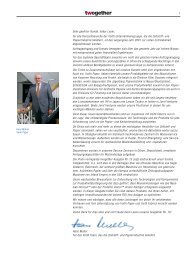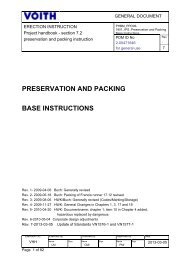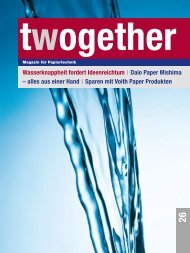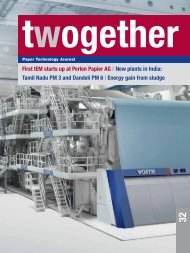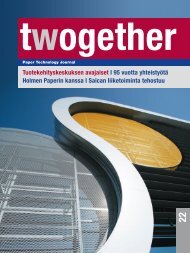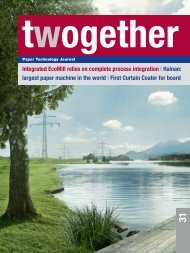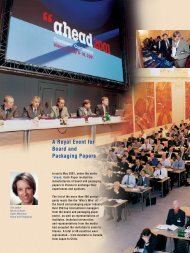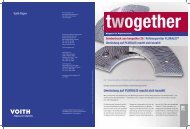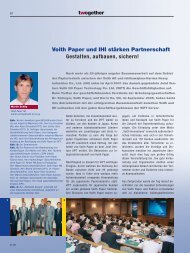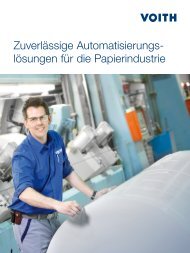Create successful ePaper yourself
Turn your PDF publications into a flip-book with our unique Google optimized e-Paper software.
10<br />
14<br />
Fig. 10: Relationship between disposal costs<br />
per ton paper and dry content of the rejects going<br />
to landfill.<br />
Graphic papers<br />
Newsprint<br />
Corrugating medium<br />
Fig. 11: Example of a complete rejects<br />
handling system for preparing the rejects for<br />
incineration.<br />
A Dinoscreen is used for removing<br />
coarse contaminants from the sewer<br />
channel, dumping them into a separate<br />
container. Rejects from HD and LD cleaning<br />
and from slot screening are dewatered<br />
in a Sediphant. The heavyweight<br />
material from the Sediphant is also discharged<br />
into a separate container.<br />
The complete rejects from the drum<br />
pulper are collected on a conveyor. A<br />
metal detector removes large pieces of<br />
metal, which are dumped into a container<br />
by reversing the conveyor direction. A<br />
magnetic separator, located above the<br />
conveyor, removes ferrous metal, also<br />
dumping it into a container.<br />
The rejects are then shredded into small<br />
pieces in a Lion shredder. Rails allow the<br />
shredder to be moved into a maintenance<br />
position without interrupting operation of<br />
the rejects handling system. A second<br />
magnetic separator then removes any remaining<br />
ferrous metal from the conveyor<br />
feeding the post-shredding stage. Here,<br />
two Lion shredders operate one above<br />
the other and at 90° to each other. These<br />
<strong>17</strong>/04<br />
80<br />
70<br />
60<br />
50<br />
40<br />
30<br />
20<br />
10<br />
Disposal costs per ton paper Euro<br />
30 40 50 60 70<br />
Dry content of the rejects going to landfill (in %)<br />
Automatic container<br />
loading station<br />
Further<br />
reduction<br />
in size<br />
reduce the rejects to the required size.<br />
The feed conveyor can be swung so that<br />
the post-shredding and the subsequent<br />
compactor stages can be bypassed.<br />
In normal operation the shredded material<br />
is dewatered with a Compax reject<br />
compactor, achieving a dry content of<br />
more than 60 %. After compacting, the<br />
rejects are distributed automatically into<br />
four containers. A movable conveyor<br />
equipped with sensors can fill every container<br />
from several positions so that all<br />
four container capacities are used to the<br />
full. The rejects are now suitably ready<br />
for incineration.<br />
Up to now, most of the examples of complex<br />
rejects handling systems are in<br />
Europe, but in other countries there is an<br />
increasing need to pay more attention to<br />
rejects handling. This is motivated either<br />
by the need to reduce operating personnel<br />
or to simplify disposal and make it<br />
more cost efficient.<br />
Compax<br />
Sediphant<br />
Dinoscreen<br />
Initial reduction in size<br />
Magnetic separators 1+2<br />
Drum pulper<br />
11



